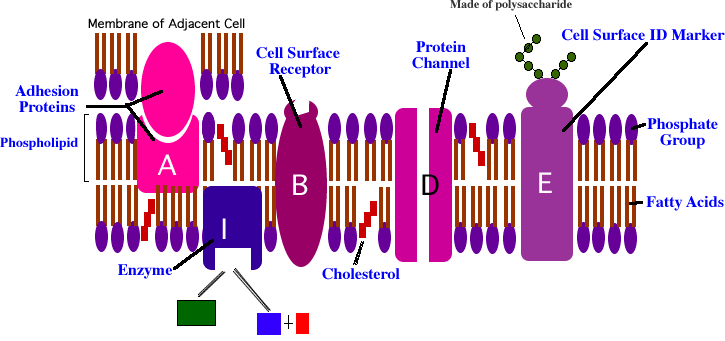
Read pg. 111 (old) or pg. 109 (new books) in your book!

The plasma membranes of eukaryotic cells are made of bilayer lipid molecules. Suspended within this double layer of phospholipid molecules are numerous proteins, which play varied roles in relation to the membrane. These proteins float within the phospholipids and can move about, just like the phospholipids can move!
1. Transport Channel Proteins (D):
Proteins pores (w/ 'lock & key gate') through which ions and macromolecules may pass.
2. Enzymes (I):
Membranes provide a convenient surface for enzymes to be embedded. Enzymes for related reactions are organized next to each other, organizing the reactions for greater efficiency.
3. Cell Surface Receptors (B):
Many proteins have 'lock & key' surfaces, which will only fit to specific substances. When the chemical binds to the protein, it is brought into the cell (via facillitated diffusion). This is how some large food macromolecules, chemical messengers, or even viruses enter cells.
4. Cell Surface Identity Markers (E):
Each cell carries its own ID markers (glycoproteins- proteins with carbohydrate markers) which identify the cell as belonging to that individual organism.
5. Cell Adhesion Proteins (A):
Adjacent cells stick together via interlocking proteins on their membranes.